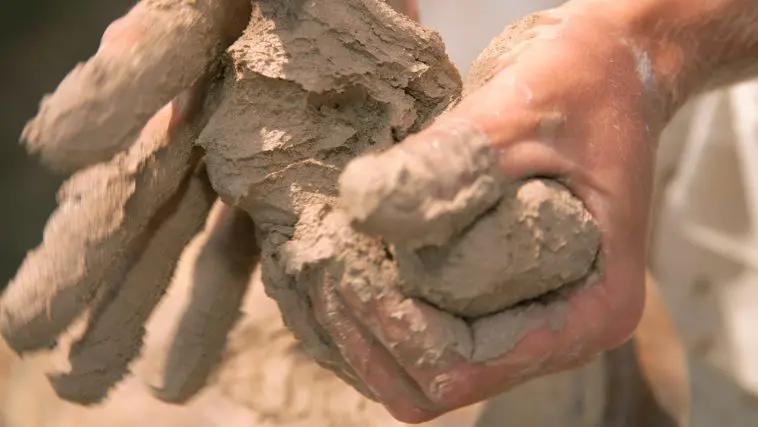[Originally published as Spit In The Eye]
When he had thus spoken, he spat on the ground, and made clay of the spittle, and he anointed the eyes of the blind man with the clay, (John 9:6)
Jesus performed many healing miracles during His time of ministry on earth. The miracles were not only an expression of His compassion for the hurting, but they served as evidence of who He was according to predictive prophecy.
John the Baptist, who baptized Jesus, recognized who He was.
And John bare record, saying, I saw the Spirit descending from heaven like a dove, and it abode upon him. And I knew him not: but he that sent me to baptize with water, the same said unto me, Upon whom thou shalt see the Spirit descending, and remaining on him, the same is he which baptizeth with the Holy Ghost. And I saw, and bare record that this is the Son of God.” (John 1:32–34)
Later, John was imprisoned by Herod Antipas, and he started having doubts about the authenticity of Jesus. In order to reassure himself that he had baptized the right man, he sent his disciples to verify that Jesus was indeed the expected Messiah. Responding to their questions,
“Jesus answered and said unto them, Go and shew John again those things which ye do hear and see: The blind receive their sight, and the lame walk, the lepers are cleansed, and the deaf hear, the dead are raised up, and the poor have the gospel preached to them.” (Matthew 11:4–5).
Jesus quoted prophecy with which John would be familiar as proof of who He was.
Then the eyes of the blind shall be opened, and the ears of the deaf shall be unstopped. Then shall the lame man leap as an hart, and the tongue of the dumb sing: for in the wilderness shall waters break out, and streams in the desert (Isaiah 35:5–6).
“Thy dead men shall live, together with my dead body shall they arise. Awake and sing, ye that dwell in dust: for thy dew is as the dew of herbs, and the earth shall cast out the dead” (Isaiah 26:19).
The Spirit of the Lord GOD is upon me; because the LORD hath anointed me to preach good tidings unto the meek; he hath sent me to bind up the brokenhearted, to proclaim liberty to the captives, and the opening of the prison to them that are bound (Isaiah 61:1).
Jesus performed many miracles proving His power and divinity. So many, that John wrote in his Gospel,
And there are also many other things which Jesus did, the which, if they should be written every one, I suppose that even the world itself could not contain the books that should be written. Amen. (John 21:25)
Blindness was one of the more common healings Jesus performed.
In most cases, Jesus simply spoke the word, and the blind were healed. For example, the first restoral of sight recorded by Matthew was of two blind men.
“And when Jesus departed thence, two blind men followed him, crying, and saying, Thou Son of David, have mercy on us. And when he was come into the house, the blind men came to him: and Jesus saith unto them, Believe ye that I am able to do this? They said unto him, Yea, Lord. Then touched he their eyes, saying, According to your faith be it unto you. And their eyes were opened; and Jesus straitly charged them, saying, See that no man know it” (Matthew 9:27–30).
On another occasion, Matthew records, “Then was brought unto him one possessed with a devil, blind, and dumb: and he healed him, insomuch that the blind and dumb both spake and saw (Matthew 12:22). In most cases, the healing required faith on the part of the recipient, but in this case, it was the faith of those who brought the demon-possessed man to Jesus.
Two cases recorded in the Gospels stand out among the others for the unorthodox method Jesus employed in healing the blindness.
And he cometh to Bethsaida; and they bring a blind man unto him, and besought him to touch him. And he took the blind man by the hand, and led him out of the town; and when he had spit on his eyes, and put his hands upon him, he asked him if he saw ought. (Mark 8:22–23)
This was not an instantaneous healing as in other cases where Jesus healed with just His word. At first, the man’s vision was unclear. “And he looked up, and said, I see men as trees, walking. After that he put his hands again upon his eyes, and made him look up: and he was restored, and saw every man clearly.” (Mark 8:24).
Could Jesus not have just spoken the word, as He had on other occasions, and healed the man’s blindness instantly?
This has puzzled commentators through the years. Adam Clark suggests, “Our Lord could have restored this man to sight in a moment; but he chose to do it in the way mentioned in the text, to show that he is sovereign of his own graces; and to point out that, however insignificant means may appear in themselves, they are divinely efficacious when he chooses to work by them.”1 That seems like a reasonable conclusion, but why here and not in all cases?
Albert Barnes is equally puzzled. “Why this was done is not known. It was evidently not intended to perform the cure by any natural effect of the spittle. It was to the man a “sign,” an evidence that it was the power of Jesus. The eyes were probably closed. They were perhaps “gummed” or united together by a secretion that had become hard. To apply spittle to them – to wet them – would be a “sign,” a natural expression of removing the obstruction and opening them. The power was not in the spittle, but it attended the application of it.”2 This too seems a reasonable explanation, but why spit; why not water or olive oil?
Matthew Henry probably offers the best explanation. “That Christ used a sign; he spat on his eyes (spat into them, so some), and put his hand upon him. He could have cured him, as he did others, with a word speaking, but thus he was pleased to assist his faith which was very weak, and to help him against his unbelief. And this spittle signified the eye-salve wherewith Christ anoints the eyes of those that are spiritually blind.”3 It is true that Jesus, by the faith of the recipients, healed immediately. But here, the blind man was brought to Jesus; he did not come of his own volition. Furthermore, Jesus took him by the hand and led him out of the city. This act initiated the man’s trust in the Healer. Spitting into his eyes further convinced the man that Jesus was doing something. At first, he is vision was blurred, but it was better than before. This, too, served to further increase his faith in Jesus’ healing touch. The second time Jesus touched his eyes, his vision was fully restored.
John records the other vision restoration by spittle in John 9.
In this account, Jesus was in Jerusalem, possibly on the Feast of Tabernacles.4 As he walked in the vicinity of the Temple, He saw a man who was blind from birth.5 The text implies that Jesus knew that the man was blind from birth, but how the disciples knew is not clear, for they asked Him, “Master, who did sin, this man, or his parents, that he was born blind?” (John 9:2).
They had the common understanding that such tragedies came as a result of sin. Jesus assured them that neither was the case, “but that the works of God should be made manifest in him” (v. 3). With that, Jesus proceeded to restore the man’s vision.
When he had thus spoken, he spat on the ground and made clay of the spittle, and he anointed the eyes of the blind man with the clay, And said unto him, Go, wash in the pool of Siloam, (which is by interpretation, Sent.) He went his way therefore, and washed, and came seeing (John 9:6–7).
This is another sight restoration that puzzles the commentators. Why would Jesus employ such methods? It could not have been to prove anything to His disciples; they had already seen Him heal blindness. If the purpose was merely to show that sin was not the cause of the man’s blindness, He could have healed him as He had done others. Besides applying mud spitballs to the man’s eyes, Jesus encouraged the man’s faith by sending him to wash in the Pool of Siloam.
I suspect I know the reason behind Jesus’ method. Jesus is the Creator. “All things were made by him; and without him was not any thing made that was made” (John 1:3). “For by him [Jesus] were all things created, that are in heaven, and that are in earth, visible and invisible, whether they be thrones, or dominions, or principalities, or powers: all things were created by him, and for him: (Colossians 1:16).
With that understanding, we can look back to Genesis. “And the LORD God formed man of the dust of the ground, and breathed into his nostrils the breath of life; and man became a living soul” (Genesis 2:7).
God “formed” man out of dirt.
The Hebrew word translated “formed” is yâtsar, which Strong’s defines as “to mould into a form; especially as a potter.” By implication, it required God (Jesus) to form and shape the human body out of moist clay.
Coming back to the blind man’s condition, John records that he was “born blind.”6 That leads me to suspect that the man may have been born with a birth defect where his eyeballs did not develop completely or did not develop at all. The fact that Jesus made clay with His spittle harkens back to the original creation account. Here, Jesus created the missing eyeballs out of the clay. In this, Jesus demonstrated to His disciples and to us in a very clear and visual object lesson that He is the Creator God.
There is physical blindness that impairs the victim from seeing the physical world. There is also a spiritual blindness that impairs the sinner from seeing the spiritual world. Jesus heals both kinds of blindness, but of the two, spiritual blindness is the more severe, for it leads the victim to an eternity separated from the only One that can heal. Reader, if you do not know Jesus, you are spiritually blind. Come to Jesus and be forever healed of that blindness. Read my page on “Securing Eternal Life.”
Notes
- Adam Clarke, LL.D., F.S.A., (1715-1832), Adam Clarke’s Commentary on the Bible, (Published in 1810-1826; Public Domain).
- Albert Barnes, Albert Barnes’ Notes on the Bible, (Published in 1847-1885; Public Domain).
- Matthew Henry, Matthew Henry’s Commentary on the Whole Bible, (Published in 1708-1714; Public Domain).
- John 7:2
- John 9:1
- John 9:19







